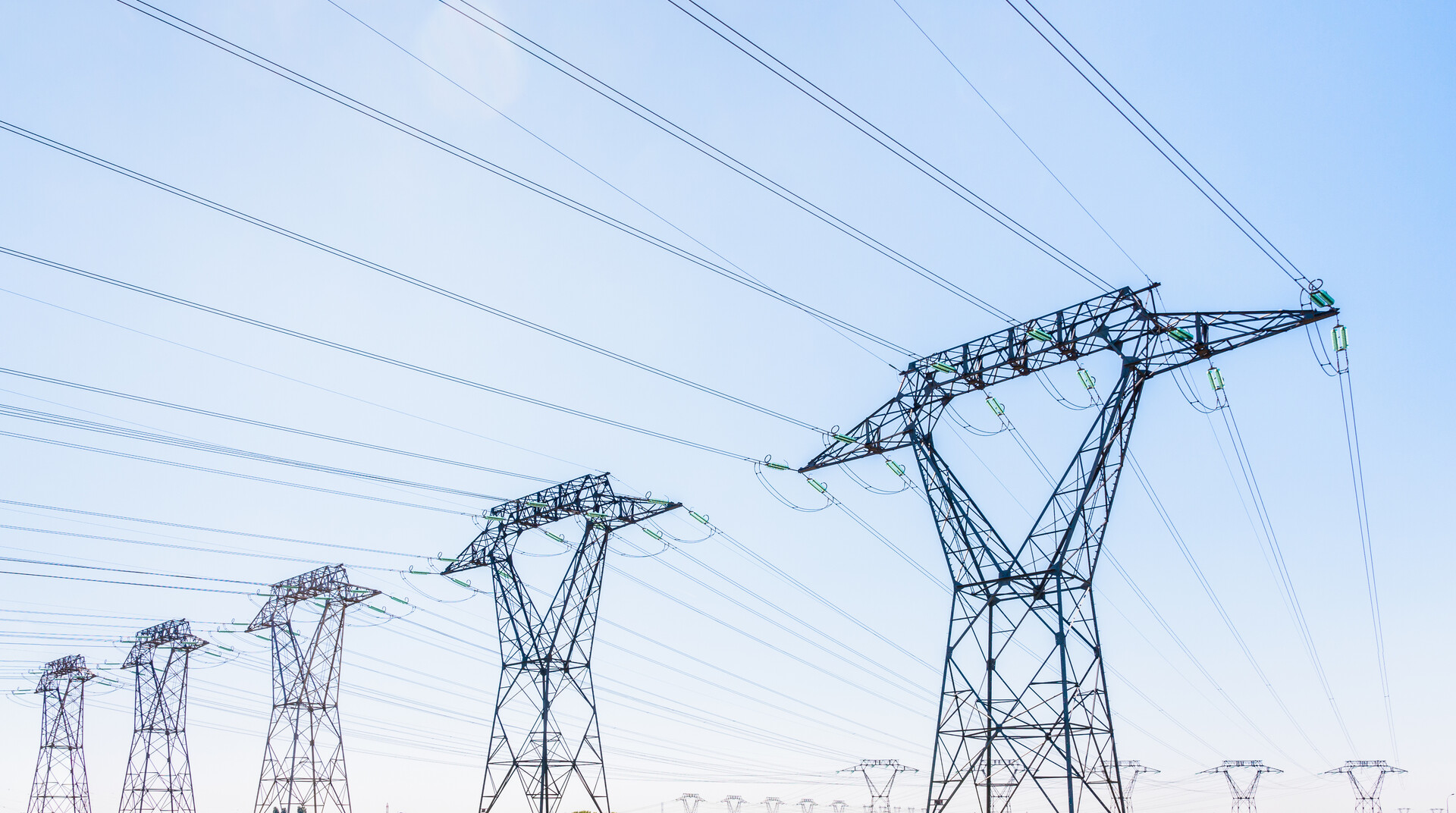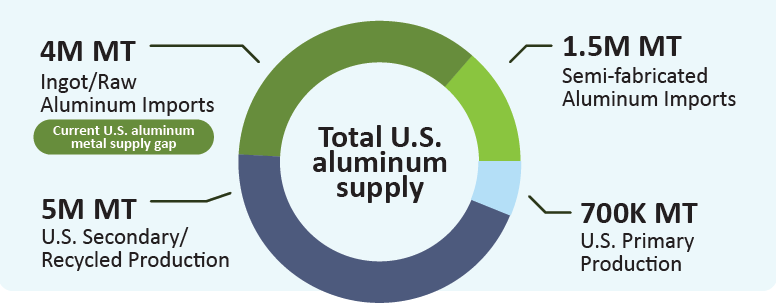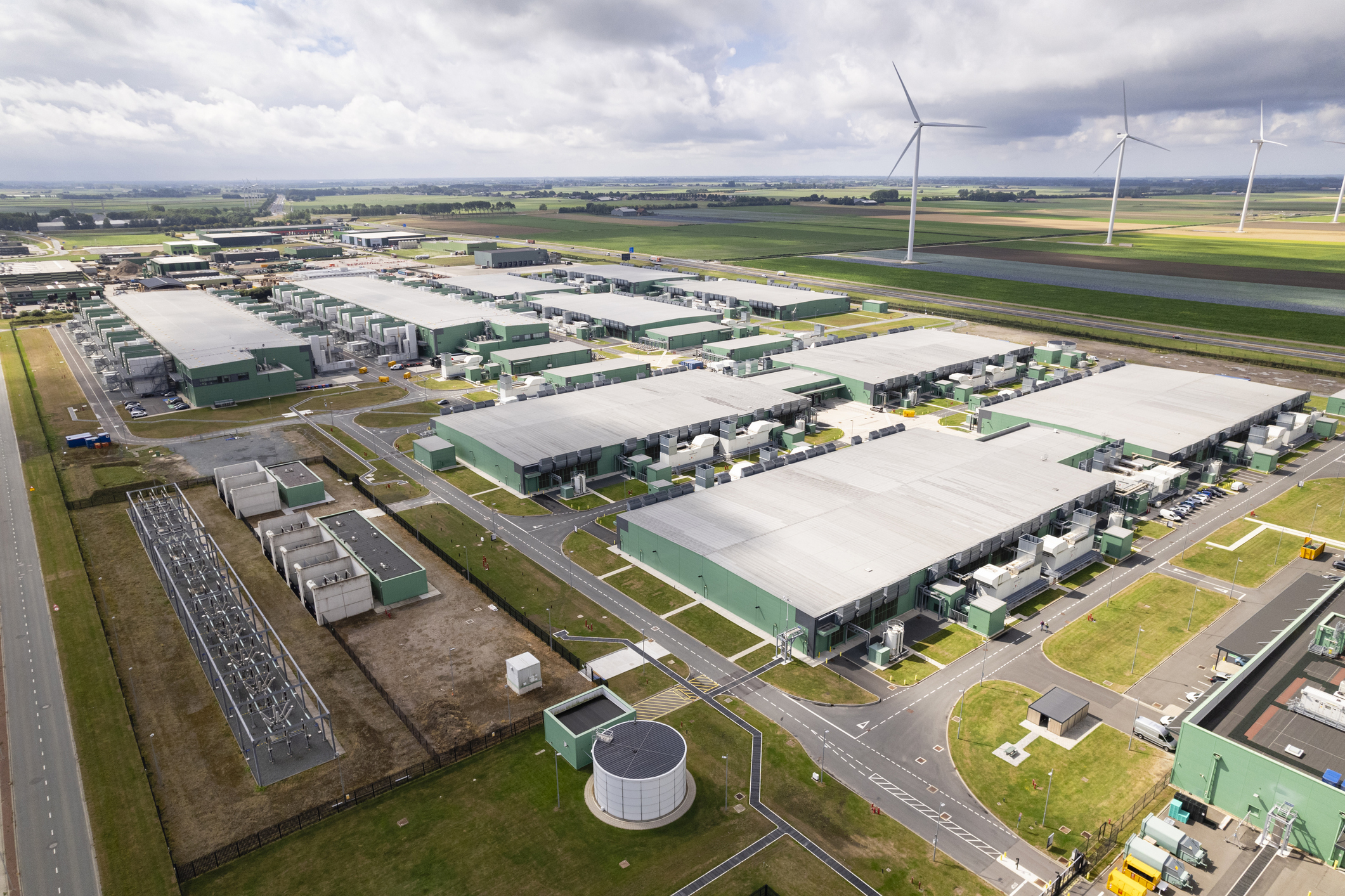
Energy Powers Aluminum Production
Aluminum production is inherently energy intensive, making access to affordable, reliable and scalable electricity a strategic necessity for the industry. As demand for aluminum accelerates across various strategic sectors, energy policy will directly shape America's ability to produce the aluminum it needs.
Why Energy Matters for U.S. Aluminum
North America is one of the best places in the world to make aluminum and demand is growing. But the U.S. aluminum industry is effectively “short” ~4 million tons of raw, unwrought metal that we are unable to supply through primary production or domestic recycling. Even at full capacity, U.S. smelters can only meet around 1/3 of domestic demand for primary aluminum. New domestic production is needed but building a new aluminum smelter is extremely energy intensive, requiring around 11 TWh of new, dedicated electricity, which is enough power to supply a city like Detroit, Nashville or Boston for a year.

Smart energy policy can power up the next generation of American aluminum supply chain resilience
Energy For U.S. Aluminum Agenda
- Incentivize affordable, long-term energy supply growth for manufacturers using an ‘all of the above’ approach to fuel sourcing
- Provide incentives for optimization of existing energy supply
- Promote growth of new electricity generating technologies such as SMR and geo-thermal
- Support policies that enhance natural gas production and maintain availability for domestic use
- Expedite interconnection of new electricity generation facilities to the grid
- Promote competitive bidding of new electrical transmission line installation
- Expand grid enhancing technologies
- Make electricity transmission rates transparent and publicly available
- Incentivize new natural gas pipeline construction and optimize existing natural gas pipeline use
- Pursue permitting reform for energy and manufacturing projects to streamline new project construction
- Incentivize the timeliness, predictability and transparency of regulatory agency permitting actions
- Enforce project deadlines, penalties for project delays and regular reporting requirements
- Expand FAST-41 Act and similar state programs for permitting improvements
- Capture more aluminum for recycling
- Invest in existing and new recycling infrastructure for collection and sorting so more energy-saving recyclable material can be used as an input material
- Support policies that keep scrap aluminum at home for sorting, melting and re-use

Data Center / AI Competition
Enormous electricity requirements for primary aluminum production poses a unique challenge for industry self-sufficiency.
- A single new aluminum smelter uses ~11 TWh – a similar amount of electricity every year as a major U.S. city like Boston or Nashville.
- A smelter requires a 10 – 20 year contract with electricity costs ~$40/MWh.
- Technology companies are currently committing upward of $115/MWh for power at AI data centers.
- The Energy Information Administration estimates that the United States will have an energy deficit ~ 50 TWh by 2035 on current trendlines.
Power Up American Aluminum
Achieving self-sufficiency in U.S. aluminum production will require significant investment, long-term planning and strong collaboration between government and industry. Powering Up American Aluminum: A Roadmap for Next Generation Supply Chain Resilience. The white paper outlines three strategic approaches to strengthen domestic aluminum supply.
- Build new or restart idled primary aluminum smelters.
- Building a new smelter takes 5–6 years, $4–6B, and lots of power. The U.S. would need five 750,000-ton facilities to close the current gap of 4M tons of aluminum. Restarting four idled smelters could help but would only meet ~15% of the existing shortfall.
- Recover and recycle more domestic aluminum scrap.
- Recycled aluminum production in the United States is at record levels and uses 95% less energy than primary production. It’s also far cheaper to build recycling facilities versus new smelters. With better sorting technology, the U.S. could recover 1–2 million metric tons of scrap now landfilled or exported—enough to meet 25–50% of the current supply gap.
- Import metal from trusted partners, especially Canada.
- Canadian smelters pay $25–$40/MWh for power, compared to $60–$80/MWh in the U.S. Plus, each smelter job in Canada supports about 13 downstream U.S. aluminum jobs. As the industry moves to build more smelters and grow recycling, trading partners like Canada provide a critical bridge to meet current and future aluminum demand.
